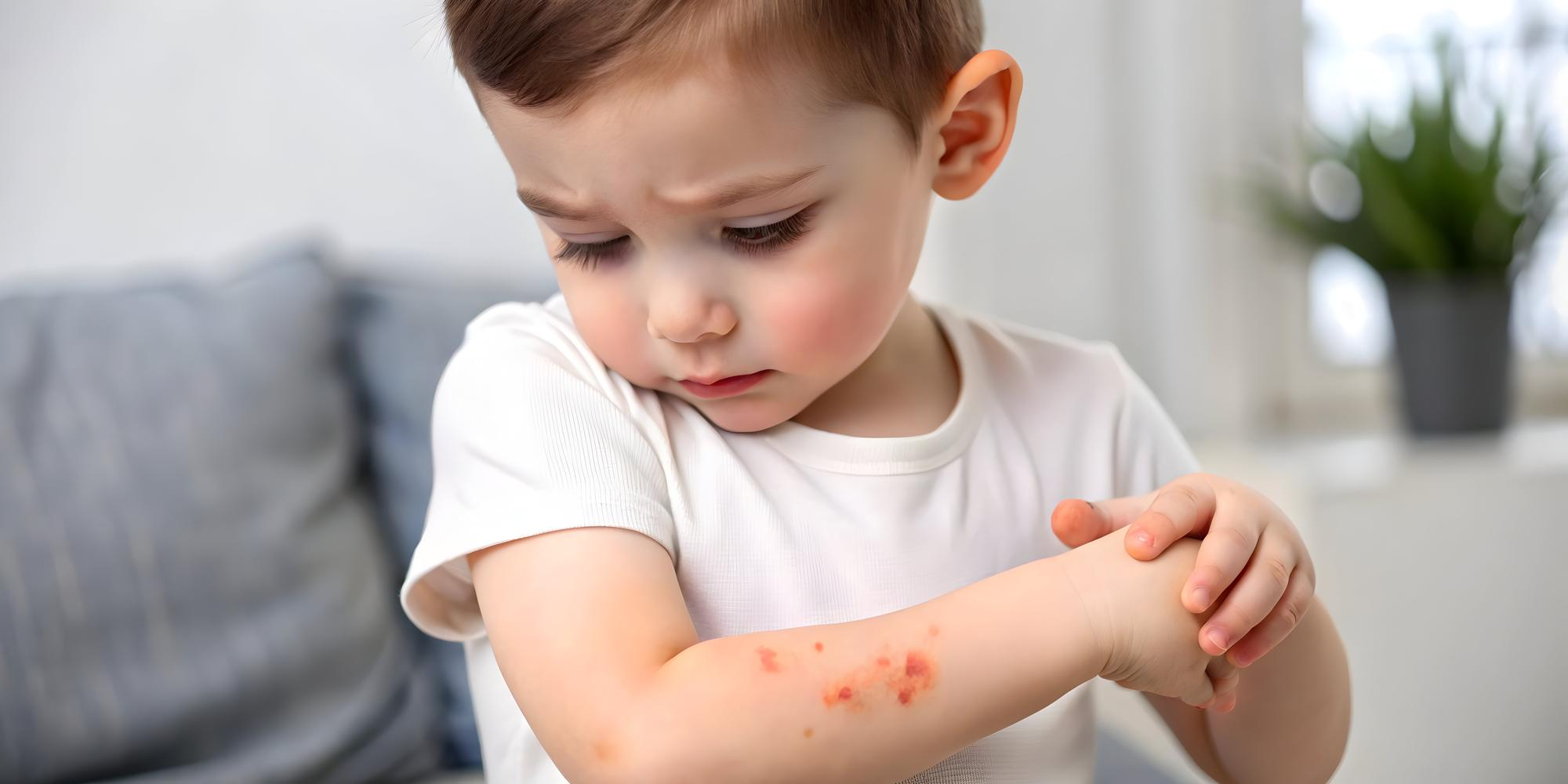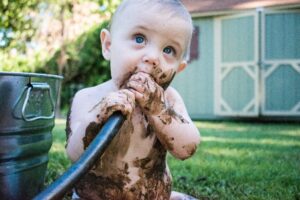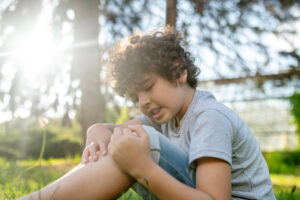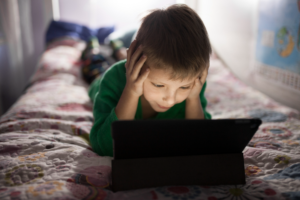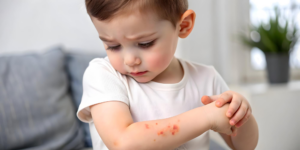Introduction
The arrival of the Indian monsoon changes everything, and parents must adjust their focus to their children’s skincare. Though the rain brings life, the humid weather can harm sensitive young skin. Children’s skin is soft and prone to react to moisture, which often leads to itchy rashes.
The wet conditions are perfect for fungi to grow, often leading to fungal infections. Doctors notice more cases of skin issues in kids during the monsoon season. Children enjoy playing in the rain, making it easy for them to pick up these unwelcome skin concerns.
Proactive skincare is essential when tackling these seasonal challenges. By keeping an eye out for early signs of trouble, parents can prevent most skin problems before they get worse. Ensuring children are monitored helps them stay comfortable during rainy months.
Knowing what common monsoon skin issues look like can help manage them early. Skin rashes and fungal infections like ringworm top the list during this time. Recognizing these conditions quickly lets parents care for their children effectively before discomfort sets in.
Understanding Monsoon-Related Skin Conditions in Children
Children’s skin is thinner and less protected than adults, making it more exposed to irritating things and infections. The monsoon brings heavy rain and high humidity, which can damage this sensitive skin even further, causing various issues.
Rain and increased moisture levels create an ideal setting for bothersome skin conditions. Quick changes in weather can upset the skin’s balance, leading to conditions like eczema or heat-induced red spots that can be very itchy.
Wet skin conditions welcome problems like ringworm and athlete’s foot, which thrive in damp environments. Ringworm makes circular, itchy marks, often appearing on moist skin surfaces, while athlete’s foot prefers areas between toes, causing swelling, itching, or burning discomfort. These can be avoided with simple practices.
High humidity keeps sweat trapped on the skin, causing irritation and rashes. For children, this results in more itching, possible rashes, and overall increased sensitivity. Wearing breathable fabrics and managing moisture helps prevent these issues effectively by keeping their skin comfortable.
1. Opt for Breathable and Comfortable Clothing Options
Choosing clothes wisely protects children from skin rashes during monsoon. Breathable materials like cotton help skin stay cool and fresh. During heavy rains, kids should wear thin clothing to keep skin dry, reducing the chance of moisture-based irritations.
When selecting school uniforms, prioritize comfort before style or trends. Choosing loose-fitting cotton garments keeps children cool and comfortable throughout the school day. Packing an extra pair of uniforms helps to handle any unforeseen weather-related changes easily.
Properly drying clothes is vital to avoid musty smells or germs. Ensure clothes dry completely under sunlight or in airy places to avoid fungal growth. Ironing clothes with a hot iron adds cleanliness by eliminating hidden germs.
Environmental factors like constant rain can affect clothing hygiene significantly. Rain-soaked clothes need immediate washing to maintain cleanliness effectively. Use vinegar in water to rinse clothes occasionally—it kills bacteria and prevents mildew naturally.
2. Footwear Management and Care
Choosing the right shoes when it’s wet outside is crucial for keeping children’s skin healthy during the monsoon. Waterproof footwear or quick-drying options keep feet dry and skin rash at bay.
If kids’ shoes get wet, it’s best to switch them out for another pair during the day. Staying in wet shoes can lead to skin trouble or infections like athlete’s foot.
Having more than one pair of shoes allows for proper airing and drying time. Rotate between pairs so one set dries while the other is being worn.
Taking care of shoes by washing them keeps fungus away and ensures comfort. Use mild cleaners and make sure every pair is thoroughly dry before use.”
3. Establishing a Post-School Skincare Routine
Switching out of wet clothing is key to avoiding skin problems.
Immediately after school, a quick rinse removes all the day’s dirt and sweat. Using mild soap cleanses the skin without removing good oils.
Gently pat your body dry, paying close attention to feet and armpits. The groin area needs special focus since it usually traps moisture.
Check regularly for any early signs like spots or irritation on the skin. Quick attention to redness may prevent it from becoming a bigger issue.
7. Managing Home Environments for Skin Health
Controlling the home environment can help prevent skin rashes in children during monsoon. Indoor humidity needs to be controlled properly, which stops the growth of mold and mildew. Too much moisture causes these, leading to irritation of sensitive skin.
It’s essential to ensure good air circulation within the house to promote health. Make sure rooms where children spend time are ventilated well. Ceiling fans or portable fans are useful for moving air around effectively.
It’s vital to keep bedding and play areas dry for optimal safety. Wet bed covers could encourage bacteria and mites, so consider moisture-absorbing mattresses. Change bed linens often, keeping everything nice and dry.
Dehumidifiers can reduce moisture levels inside homes efficiently during monsoon seasons. Excess water is removed from the air, helping minimize fungal presence indoors significantly. Place these in high-humidity rooms like bathrooms or basements for best results.
8. Specialized Bathing Practices
Participating in regular bath times keeps skin healthy during rainy periods. Bathe children two times each day for removing dirt and sweat. Maintaining cleanliness prevents germs that might cause itchy skin issues later.
Using child-friendly bath products makes a difference during these routines. Pick cleansers that do not contain harsh ingredients or fragrances. These gentler products help keep the skin’s natural moisture intact and safe.
Post-bath care involves proper drying to avoid further issues. Use towels to pat dry gently instead of rubbing hard on the skin. Moisture should not remain between toes, underarms, or other hidden spots as it can promote fungi.
Medicated soaps can be helpful but need careful consideration when using. Always get medical advice before trying these products on your kid’s skin. Improper usage may lead to adverse reactions, even if intended to help.
9. Moisturizing Techniques and Choices
The rainy season means our skin needs extra attention. Using a gentle, water-based moisturizer after the shower helps keep your skin soft. It locks in moisture, creating a shield against the harsh weather outside.
Picking the right moisturizer makes all the difference. Opt for products that suit humid conditions and are easy on the skin. Gel-based formulas work great because they sink in fast without causing breakouts or clogging pores, especially for kids’ delicate skin.
Some body parts need extra moisturizing love. Focus on elbows, knees, and feet—these dry out quickly. Putting lotion on right after bathing lets it soak in better. Watch for any dry spots that might need extra attention.
Rich creams or thick lotions could give you trouble during this time, as they can trap dampness and cause issues. Use lighter lotions instead—give the skin room to breathe while staying protected and soft. This habit helps keep away skin rashes in children during monsoon season.
10. Recognizing When to Seek Dermatological Assistance
If your child’s skin rash sticks around or gets worse, it’s time to see a doctor. Don’t ignore if they have other symptoms like fever or pain. Persistent itching or redness requires proper care to avoid complications.
It’s risky to treat skin issues at home without professional guidance. The wrong products could lead to allergies, making things worse. It’s easy to make mistakes with home treatments, which can complicate a child’s condition.
Visiting a dermatologist early can lead to better outcomes for your child. You’ll get a precise diagnosis and a tailored treatment plan for fast recovery. A dermatologist helps prevent problems from returning and manages symptoms effectively.
Bring any relevant medical history when visiting the dermatologist. They’ll ask about the condition and do a detailed examination. Understanding the process can help you manage subsequent care diligently.
Special Guidelines for the First Rains
The first monsoon rains can bring challenges for a child’s skin. Sometimes, acid rain can irritate their sensitive skin, causing it to become uncomfortable.
When air pollutants mix with rain, the water gets acidic. This acidic water can irritate your child’s skin, potentially leading to rashes. It’s wise to keep away from the rain during these initial showers.
As a parent, be extra careful in early rainy days. Outfit your child with proper waterproof gear, including shoes and coats. Avoid letting them walk in puddles filled with lurking germs and bacteria. After encountering the rain, changing into dry clothes and bathing promptly help keep their skin happy.
Rainy weather might limit playing outside but doesn’t stop fun indoors. Use this time to spark creativity through games, crafts, or stories. These indoor adventures keep children safe and create delightful memories amid the rainy season.
Conclusion
Navigating the monsoon season with young children needs careful planning for both skincare and home management. By following the outlined approaches, you’ll find effective ways to reduce risks and protect children from monsoon-related skin issues like skin rashes in children during the rainy days.
The monsoon can challenge skin health, but with proactive care, it remains manageable. By understanding and using suitable preventive steps, your children can enjoy rainy days with minimal worries about skin troubles. It’s essential to stay aware of what impacts their skin during these times.
Preventive skincare routines give peace of mind about potential problems. This approach builds habits that protect kids’ skin, turning them into everyday practices, ensuring they remain protected during the humid months. Establishing a routine can prevent many common skin complaints linked to wet weather.
Embracing health-forward practices promotes a caring space for children. Simple but effective routines keep them comfortable and healthy, allowing them to enjoy the wet season without worrying about discomfort from skin irritations. Fostering a supportive environment helps in dealing with any skin issues efficiently, ensuring a joyful monsoon.
